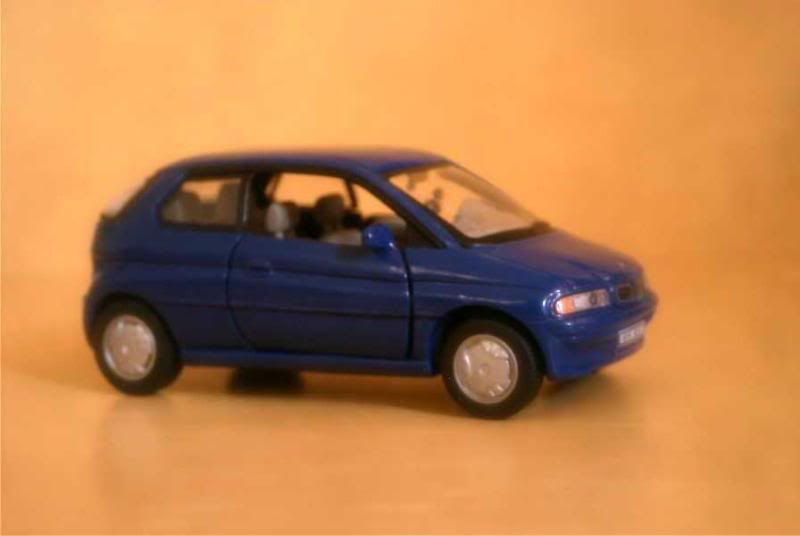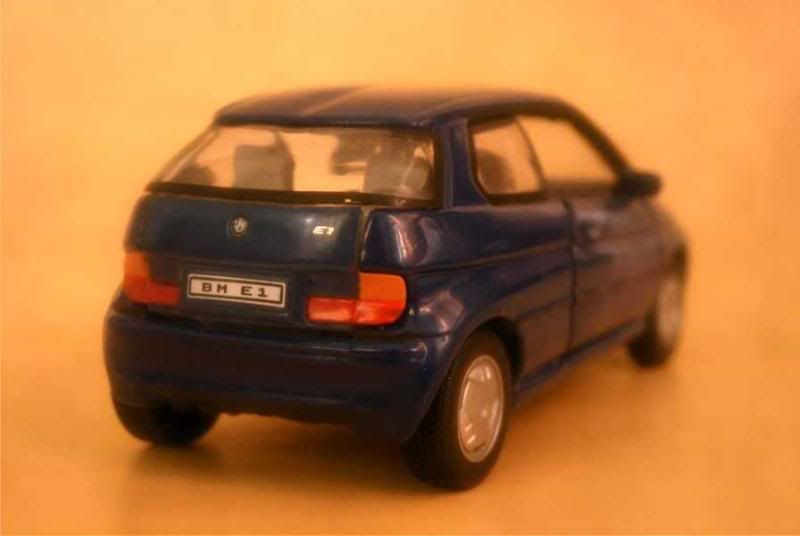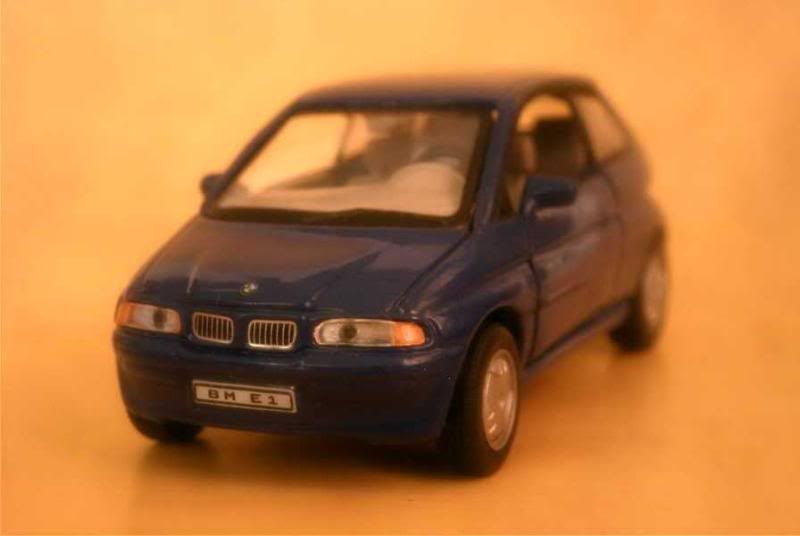A little history
When it unveiled its E1 city car prototype during the 1991 Frankfurt motor show, BMW was among the first to answer the call for more environment-friendly vehicles. An early hybrid, the E1 could be powered, depending on the driver’s choice, by a 32 kW electric motor or a 1.1-litre inline four rated at 82 hp. BMW having no gasoline engine as small as the latter in its production cars’ range, the E1’s block was actually adapted from the K1100 motorcycle’s engine.
The E1’s structure was built from aluminium elements assembled together. Some panels were also made of plastic. This gave the car both rigidity and light weight. Wheels were pushed to each corner of the vehicle, allowing an incredibly large passenger compartment, considering the tiny overall length. Security was also a concern for BMW engineers, and in this respect the E1 incorporated then-top-of-the-art technologies such as an ABS braking system, energy-absorbing zones or dual airbags at the front.
The only performance that really matters about a car that is solely or partly powered by electricity is its autonomy. Electricity having been a common form of power during the early stages of automotive history, it is amazing to see how little modern cars have progressed in such a long period of time. In this respect the BMW E1 fared rather better than most other similar projects, being able to cover 160 km in normal, urban traffic conditions and a maximum of 265 km in the most favourable situation. Perhaps the main drawback of the E1, should it have reached production stage, would have been its price and high maintenance costs. As all electrical vehicles, the E1 relied on large batteries that are expensive to manufacture, and need to be changed regularly. This stern prospect has probably done much to hinder the success of a type of car which, almost two decades after the E1 has been presented, sadly remains more of a curiosity than a potential mean of transportation.
About the model
Model: BMW E1
Year: 1991
Maker: Hongwell
Scale: 1/43
Distributed by: Cararama
Acquired: brand new, in November 2004, in Manila, Philippines
This is again a model that we should be happy a die-cast maker ever produced, albeit quality isn’t great. Indeed, while up front Cararama did things rather correctly, the reproduction of rear window and panel as a single part that is never assembled correctly does much to reduce my rating to 6/20.



When it unveiled its E1 city car prototype during the 1991 Frankfurt motor show, BMW was among the first to answer the call for more environment-friendly vehicles. An early hybrid, the E1 could be powered, depending on the driver’s choice, by a 32 kW electric motor or a 1.1-litre inline four rated at 82 hp. BMW having no gasoline engine as small as the latter in its production cars’ range, the E1’s block was actually adapted from the K1100 motorcycle’s engine.
The E1’s structure was built from aluminium elements assembled together. Some panels were also made of plastic. This gave the car both rigidity and light weight. Wheels were pushed to each corner of the vehicle, allowing an incredibly large passenger compartment, considering the tiny overall length. Security was also a concern for BMW engineers, and in this respect the E1 incorporated then-top-of-the-art technologies such as an ABS braking system, energy-absorbing zones or dual airbags at the front.
The only performance that really matters about a car that is solely or partly powered by electricity is its autonomy. Electricity having been a common form of power during the early stages of automotive history, it is amazing to see how little modern cars have progressed in such a long period of time. In this respect the BMW E1 fared rather better than most other similar projects, being able to cover 160 km in normal, urban traffic conditions and a maximum of 265 km in the most favourable situation. Perhaps the main drawback of the E1, should it have reached production stage, would have been its price and high maintenance costs. As all electrical vehicles, the E1 relied on large batteries that are expensive to manufacture, and need to be changed regularly. This stern prospect has probably done much to hinder the success of a type of car which, almost two decades after the E1 has been presented, sadly remains more of a curiosity than a potential mean of transportation.
About the model
Model: BMW E1
Year: 1991
Maker: Hongwell
Scale: 1/43
Distributed by: Cararama
Acquired: brand new, in November 2004, in Manila, Philippines
This is again a model that we should be happy a die-cast maker ever produced, albeit quality isn’t great. Indeed, while up front Cararama did things rather correctly, the reproduction of rear window and panel as a single part that is never assembled correctly does much to reduce my rating to 6/20.






2 comments:
The front resembles a BMW but the rear looks like a compact Japanese car to me. Haha!
So this model didn't reach the production line? At least Cararama made one for us to have in our display cabinet. =)
Unfortunately I think Cararama doesn't produce this model anymore. It has been only available for a short while here in Manila, so I'm quite happy to have bought mine right away when I found it.
Post a Comment